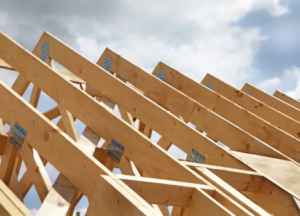
In recent years, there has been an increasing number of natural disasters such as floods and hurricanes, leading to a higher demand for water damage restoration services. However, many homeowners are not fully aware of the scientific processes involved in restoring their homes after water damage occurs.
That’s why we have put together this informative piece to help you understand how technicians use cutting-edge technology and techniques to bring your home back to its pre-damaged state. Whether you’re currently facing a water damage crisis or simply want to be prepared for any future incidents, this blog post will provide valuable insight into the science behind water damage restoration, giving you peace of mind and confidence in handling unexpected situations with knowledge and understanding.
The Science of Water Extraction
Water extraction is the first step in the water damage restoration process and it involves the removal of excess water from your property. This process is more than just removing water; it’s rooted in scientific principles related to the properties of water and its interaction with various materials.
Technicians with water removal experience use specialized equipment to extract water quickly and efficiently, while also taking into consideration factors such as the type of water (clean, grey, or black), the extent of contamination, and the material affected. This ensures that the area is thoroughly dried and sanitized, preventing any secondary damage or potential health hazards.
Drying Techniques
After water extraction, the next step in water damage restoration is drying the affected area. This process is vital as it helps to eliminate the residual moisture that can lead to mold growth and structural deterioration. A variety of scientific techniques are employed during this phase, and they’re tailored to the unique circumstances of each water damage case.
Air movers and dehumidifiers are typically used to facilitate the drying process. Air movers work by promoting evaporation through the circulation of air, whereas dehumidifiers remove excess moisture from the air, preventing secondary water damage. Infrared cameras may also be used to detect hidden moisture within walls or ceilings which may not be visible to the naked eye.
The principle of psychrometry – the study of air and its properties – plays a key role in the drying process. Understanding the relation between temperature, humidity, and dew point enables technicians to create an optimal environment for efficient drying.
Mold Growth Prevention
Perhaps the most crucial step in the water damage restoration process is mold growth prevention. Mold spores are ubiquitous and can begin to multiply quickly when exposed to moisture. The health risks associated with mold exposure, such as respiratory issues and allergic reactions, underscore the importance of this phase.
Preventing mold growth involves a multi-pronged approach. It begins with a thorough inspection to identify any areas still at risk of developing mold. Using moisture meters and thermal imaging technology, technicians can locate hidden damp spots that might escape a cursory visual inspection.
Structural Drying
Structural drying is a critical component of the water damage restoration process. This step involves the removal of excess moisture from structural elements and building materials in your home, such as wood, drywall, and insulation. The goal is to return these materials to their normal moisture content levels to prevent further water damage, such as warping, swelling, or breakdown of materials.
Relying on the science of psychrometry, technicians will use industrial-grade dehumidifiers and high-speed air movers to encourage evaporation and expedite the drying process. The use of moisture meters is crucial in monitoring the progress of the drying process, ensuring all materials reach their appropriate moisture content levels.
This process will help to prevent potential mold growth and minimize the risk of secondary damage that could compromise the structural integrity of your home. While structural drying may seem straightforward, it requires expert knowledge and should be undertaken by professionals to ensure the safety and longevity of your home.
Assessment and Documentation
The final step in the water damage restoration process is assessment and documentation. This phase is crucial, as it provides a comprehensive overview of the extent of the damage, the steps taken for restoration, and the outcome. It’s also a critical component for insurance purposes, as it will serve as a detailed record of the incident and the restoration process.
Technicians will conduct a thorough assessment of the property, documenting details of the water damage and the restoration efforts. This includes photographs of the affected areas, descriptions of the damage and restoration work, and any relevant measurements. Specialized equipment, such as moisture meters and thermal imaging cameras, may also be used to provide a detailed account of the moisture levels in the building materials and confirm that all areas have been adequately dried.
The documentation is then compiled into a comprehensive report, providing a clear and complete record of the incident, the response, and the outcome. This not only gives homeowners a full understanding of the work that was performed but also serves as valuable evidence for insurance claims, helping to ensure a fair and efficient resolution.
In conclusion, water damage restoration is a scientific process that requires specialized knowledge and equipment to ensure safe, effective, and thorough restoration. By understanding the principles behind each step of the process, homeowners can have confidence in the services provided by water damage restoration technicians and be better prepared for any future incidents.




